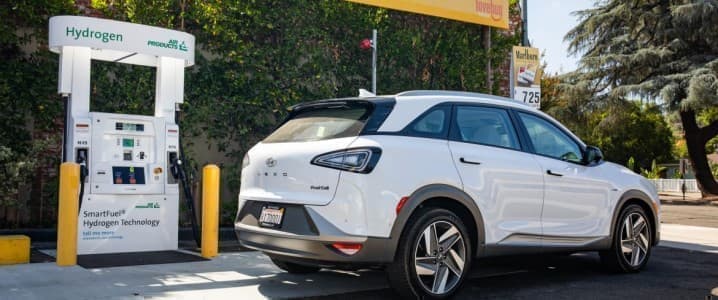“Today, hydrogen is anything but clean. That 98% produced today is an industrial feedstock. Just 2% is produced from electrolysis,” said Enel Green Power’s head of business development, Carlo Zorzoli.
“Hydrogen today is not a solution to decarbonisation: hydrogen is a part of the problem. So the very first thing to do is convert grey hydrogen to green,” Zorzoli added, speaking at the Enlit Europe webcast, as quoted by Power Engineering.
Enel Green Power has ambitious plans for green hydrogen: the company recently sealed a deal with Italian energy company Saras for the construction of a 20-MW electrolyzer that will be powered by renewable energy to produce green hydrogen.
“We are constantly seeking partnerships to identify the best applications for this technology, particularly in industrial sectors that cannot be electrified and with emissions that are harder to reduce, including the chemical industry sector," said the chief executive of Enel Green Power, Salvatore Bernabei.
On its website, Enel Green Power explains that most hydrogen produced today is produced through natural gas reformation or coal gasification—both processes that involve greenhouse gas emissions that, according to Zorzoli are “comparable to that of Indonesia and the UK combined.”
The company notes the alternative that is blue hydrogen, which is grey hydrogen but with carbon capture and storage. The cost, Enel Green Power says, is prohibitive, and there will always be fugitive emissions.
When it comes to cost, however, green hydrogen is not exactly cheap. Right now, according to a study commissioned by International Council on Clean Transportation, the price per kilo of hydrogen produced at a grid-connected hydrolyzer is currently $8.81. This will fall to $5.77 per kilo by 2050.
But the price per kilo of blue hydrogen, produced through carbon capture and storage, is currently $2.36 (2 euro), according to the EU’s hydrogen strategy. Also, according to this strategy, the price of green hydrogen varies between $2.95 and $6.49 per kilo (2.5-5.5 euro).
By Charles Kennedy for Oilprice.com
More Top Reads From Oilprice.com:
- California Senators Urge Biden To Phase Out Gasoline Cars
- Three Commodities Set To Boom As The Global Economy Recovers
- 13 Million Barrels Of Oil Could Be Affected By Suez Canal Blockage



















If hydrogen is indeed our only effective means to fight climate change at scale, then we should start with the hydrogen infrastructure itself. Why make it a two-step solution (battery-hydrogen) when we can go directly to hydrogen and get there faster? Even our present two-step solution will need hydrogen. That is correct, the proponents of battery cars that have been busy ridiculing hydrogen will need it themselves to power hydrogen generators to charge their battery cars. And of course, we will need to deliver hydrogen to our factories to make steel, cement, and fertilizer -- and to power our airplanes before it becomes unpopular to fly with jet fuel.
But how would we be able to deliver all this hydrogen across our vast land? The same way we deliver natural gas -- with pipelines. Indeed, we can even use our existing gas pipelines if we simply reline them with plastic inserts, as they are doing now in the UK -- or as we are doing here when steel pipes start leaking. And as far as setting up the hydrogen infrastructure is concerned; we should stop conflating the source of the hydrogen with the means of delivering it. One has nothing to do with the other. Arguments against the source of hydrogen should not get in the way of us setting up a safe and efficient way to deliver it to those that need it.